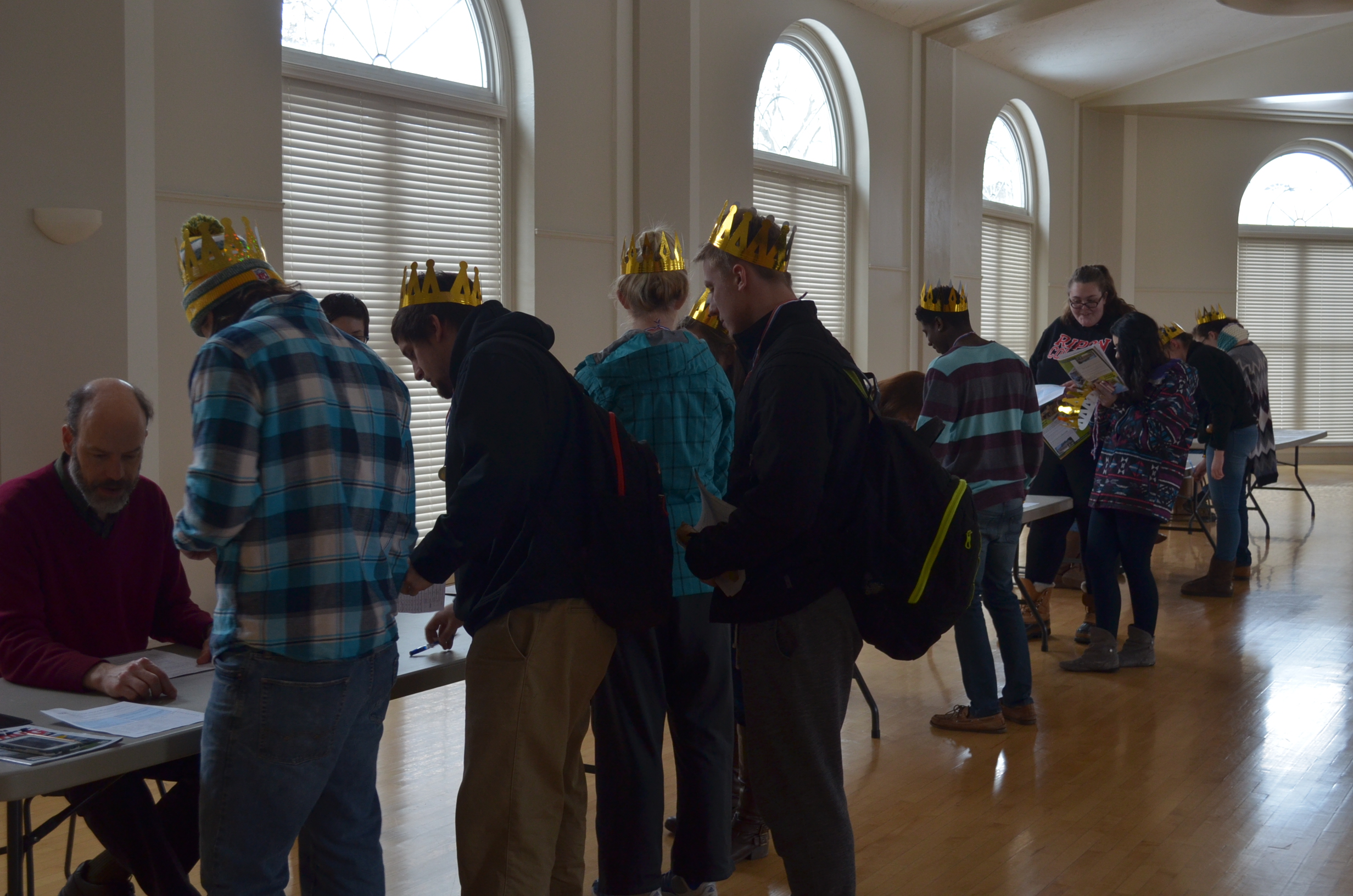By Ripon Media in College Days on March 2, 2016
-

-
Students at the Poor People’s Rally
-

-
Students at the Poor People’s Rally
-

-
Students at the Poor People’s Rally
-

-
Faculty at the Poor People’s Rally.
-

-
Students at the Poor People’s Rally
By: Connor Cummiskey
Students were given an opportunity to learn about poverty and Martin Luther King Jr.’s position on economic inequality last month during the Poor People’s Rally.
The rally educated students on the impacts of poverty, MLK’s involvement in the poor people’s campaign in the ’60s and participated in a reality check.
“The rally was inspired when research was done around the theme of economic justice,” says Director of Multicultural Affairs Kyonna Withers. “What MLK was working on when he was assassinated was the actual Poor People’s March. The march continued in his honor. The purpose behind the march was to end the epidemic of police terror and mass incarcerations. To protest austerity and end poverty.”
The final activity of the rally, the reality check, prompted students to move from station to station with a worksheet that detailed their job and income. Each station represented a necessity of modern life – such as groceries, transportation or healthcare. The goal of the activity is to have as much money left over as possible after covering all the necessities.
“The stations had three options: the cheapest option was unappealing (like you had to carry a grocery bag around and/or wear bells), the most expensive very appealing (you get a candy bar or fancy hat), and the middle option was mildly unappealing,” explains Katherine Moody, access services librarian and an organizer of the reality check activity. The activity was organized so that students would not be encouraged to just pick the cheapest options. The final booth inserted some random chance by having students roll a die. The results dictated if there was an increased expense (such as car repair, or a broken leg) or not.
“It’s my hope that students saw how tricky it can be to make ends meet,” says Moody. “Even if they did everything right and are about to end with $300 left, they may end up owing $500 because there was a leak in their house. This is exactly how life works – no one ever plans to get sick or have the car break down, but when you’re in the situation, you have to pay for it.”
This raises the question, how does poverty affect the Ripon College campus? And, what is the College doing about it? Just over one third of the College’s student population comes from lower socio-economic backgrounds, based on eligibility for Pell grants.
“The percentage of Pell eligible students at Ripon College is approximately 35 percent,” said Executive Director of Student Support Services and McNair Scholars Daniel Khrin. “Pell eligibility is a federal designation of lower income status based on a formula that makes Pell students eligible for free funds from the federal government to help these students pay for their college education.”
through the Student Support Services program. These grants are used to reduce loans.
The College not only attempts to limit the financial burden of higher education for students, it also works toward giving lower income students a better chance at moving on in their education.
“Another example of how Ripon College provides access to increase upward mobility through educational excellence and achievement is through the U.S. Department of Education McNair Scholars graduate school preparation program. [This program] prepares high-achieving first generation and lower income students, and high achieving underrepresented students (African American, Hispanic-Latino and Native American) for graduate school, with the ultimate goal of students earning their Ph.D. degree,” says Khrin.
“Ripon College believes in providing a college education to many types of students from a range of financial backgrounds,” explains Khrin. “Ripon College believes that creativity, academic success, critical and analytical thinking and career achievement should be shared by students from many backgrounds.”